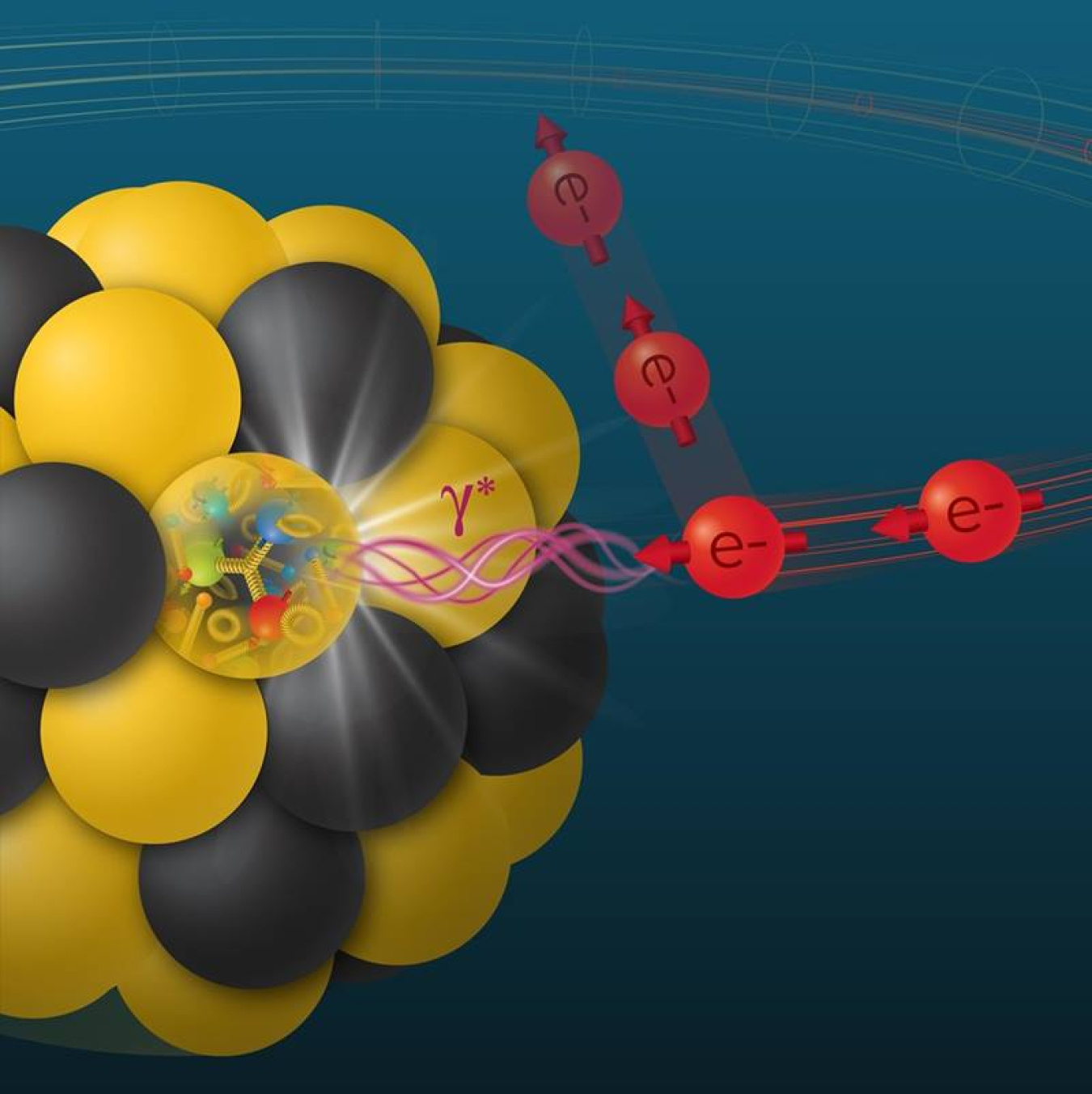Calculations of charge distribution in mesons provide a benchmark for experimental measurements and validate widely used 'factorization' method.
June 18, 2025The Science
Mesons are subatomic particles made of a quark and an antiquark that interact with the strong force. In this research, nuclear theorists used supercomputer calculations to accurately predict the distribution of electric charges in mesons. The predictions match well with measurements from low-energy experiments. They also apply to future high-energy experiments. The calculations helped validate a method called factorization. This is a widely used approach for deciphering particle properties that breaks complex physical processes into two components, or factors. In the past, scientists have supported the factorization framework using experimental and model-based approaches. This new research is important because it is the first time that factorization has been validated using only the basic laws of physics without the help of observational or model inputs.
The Impact
The predictions will provide scientists with a basis for comparison in future high-energy experiments at the Electron-Ion Collider (EIC). The EIC will explore how quarks and the gluons that hold them together are distributed within mesons, protons, and neutrons. The researchers also used the calculated predictions — together with independent supercomputer calculations —to further validate the factorization method for the experimental process that reveals meson charge distribution. The result shows that scientists can use factorization to derive properties such as the distribution of quarks and gluons within hadrons from the EIC’s scattering measurements.
Summary
To explore the inner structure of mesons, protons, and neutrons, the EIC will collide electrons with protons or atomic nuclei. Virtual photons emitted from the electron will interact with quarks and gluons within these hadrons. To transform the EIC’s precise measurements of these scattering processes into high-resolution images of the quarks and gluons within hadrons, scientists rely on factorization. This theoretical approach breaks the experimental measurement — for example, the distribution of electric charges in mesons — into two components so scientists can use knowledge of two parts of the process to infer information about the third. It’s similar to solving a multiplication equation with two known variables to find the unknown value of a third variable.
For this work, theorists used supercomputer calculations to predict charge distributions inside mesons. The predictions matched results from lower-energy experiments, giving the theorists confidence in their predictions for high-energy EIC measurements. They then used separate calculations to solve equations for two factors that these meson charge distribution values could be broken up into, one of which is the distribution of quarks and antiquarks within the meson. The results from this factorization approach also matched the newly calculated predictions, validating factorization for this process.
Contact
Swagato Mukherjee
Brookhaven National Laboratory
swagato@bnl.gov
Peter Petreczky
Brookhaven National Laboratory
petreczk@bnl.gov
Funding
This research was supported by the Department of Energy (DOE) Office of Science, Office of Nuclear Physics. The researchers used awards of computer time at the Argonne Leadership Computing Facility, the Oak Ridge Leadership Computing Facility, and the National Energy Research Scientific Computing Center, DOE Office of Science user facilities at Argonne National Laboratory, Oak Ridge National Laboratory, and Lawrence Berkeley National Laboratory, respectively. Computations were also carried out in part on facilities of the U.S. Lattice Quantum Chromodynamics Collaboration.
Publications
Ding, H-T., et al., QCD Predictions for Meson Electromagnetic Form Factors at High Momenta: Testing Factorization in Exclusive Processes. Physical Review Letters 133, 181902 (2024). [DOI: 10.1103/PhysRevLett.133.181902]
Related Links
Scientists Calculate Predictions for Meson Measurements, Brookhaven National Laboratory news release


